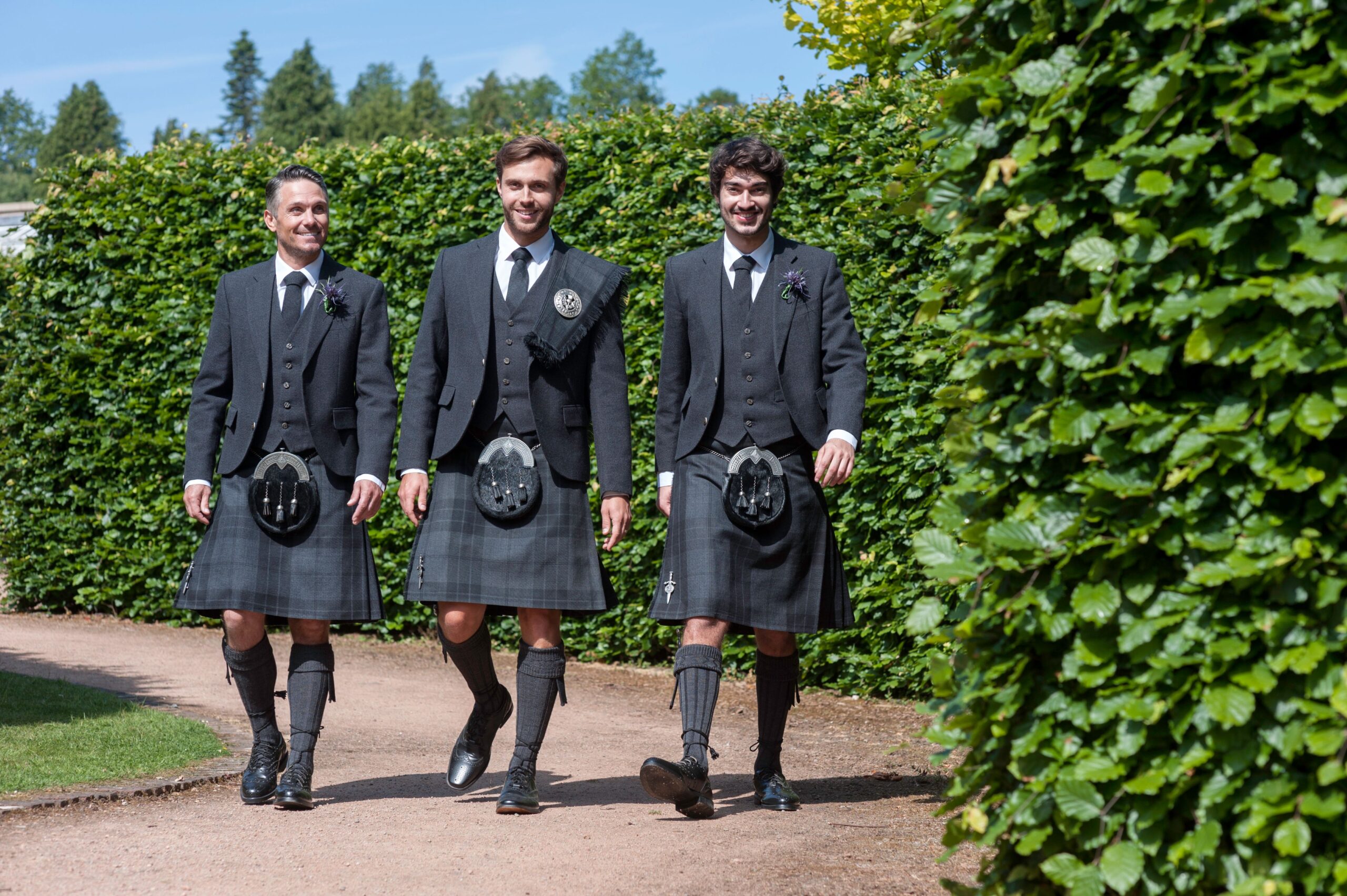Scottish attire is a distinctive and richly symbolic form of dress that has deep roots in the country’s history and culture. Defined by its iconic kilts, tartans, and traditional accessories, Scottish attire holds a special place in the hearts of Scots and captivates the imagination of people worldwide. Its evolution over time reflects not only changes in fashion but also the resilience and pride of the Scottish people.
II. Traditional Scottish Clothing
Kilts: The kilt, a quintessential element of Scottish attire, comes in various forms, including the Great Kilt and the more modern Small Kilt. Made from durable fabrics like wool, kilts are known for their distinctive pleats and tartan patterns. Accompanying accessories, such as the sporran and kilt pin, not only add flair but also serve practical purposes.
Tartan: The significance of tartan cannot be overstated in Scottish attire. With distinct patterns and colors, tartans represent familial clans or regions. While originally associated with Scottish clans, tartan has transcended its historical roots and found contemporary applications in various aspects of fashion and design.
Jackets and Vests: Complementing the kilt, jackets and vests play a crucial role in completing the traditional Scottish ensemble. Styles such as the Prince Charlie Jacket and the Argyll Jacket add a touch of formality, while waistcoats contribute to the overall elegance of the attire.
Footwear: Ghillie brogues, a type of traditional Scottish shoe, are commonly worn with kilts. Accompanied by hose and flashes, these elements contribute to the overall authenticity of Scottish attire, showcasing the attention to detail that characterizes this traditional dress.
III. Women’s Scottish Attire
Traditional Dresses: Women’s Scottish attire features elegant and traditional dresses that vary in style and purpose. From the Highland Dress to the National Dress of Scotland, these garments are often characterized by intricate details and vibrant colors, reflecting the rich cultural heritage.
Accessories for Women: In addition to dresses, women’s Scottish attire includes an array of accessories. Shawls, scarves, brooches, and jewelry are carefully chosen to complement and enhance the overall appearance, creating a harmonious blend of tradition and fashion.
IV. Occasions and Events
Formal Events: Scottish attire is prominently featured in formal events, with weddings and Highland Games being notable examples. The attire’s significance is particularly evident in weddings, where couples often incorporate traditional Scottish elements, including kilts and tartans, into their ceremonies.
Everyday Wear: Beyond formal occasions, Scottish attire has found a place in everyday wear. Casual kilts and modern interpretations allow individuals to express their Scottish heritage in a more relaxed and contemporary fashion. This adaptability speaks to the enduring appeal of Scottish dress in the modern world.
Regional Variations in Scottish Attire
While Scottish attire is often associated with a unified national identity, it’s essential to acknowledge the regional variations that contribute to its diversity. Different areas of Scotland may have distinct styles of kilts, tartans, and accessories, reflecting the unique history and heritage of each region. These variations add depth to the overall tapestry of Scottish dress, highlighting the richness and complexity of the country’s cultural mosaic.
VIII. Contemporary Trends in Scottish Fashion
In the contemporary fashion landscape, Scottish attire has evolved beyond its traditional roots, embracing modern trends and global influences. Designers and fashion enthusiasts continue to reinterpret and incorporate Scottish elements, creating hybrid styles that fuse tradition with innovation. This adaptability ensures that Scottish attire remains relevant and dynamic, appealing to a diverse audience with varying tastes and preferences.
IX. Preservation Efforts and Cultural Significance
Preserving the authenticity and cultural significance of Scottish attire is of paramount importance to communities and organizations dedicated to safeguarding Scotland’s heritage. Efforts to document, educate, and promote traditional dress ensure that future generations can appreciate and continue the legacy of Scottish attire. Beyond its aesthetic appeal, the attire serves as a tangible link to Scotland’s past, fostering a sense of pride and connection among Scots worldwide.
X. Global Adoption and Appreciation
Scottish attire has transcended its geographical and cultural boundaries, finding a global audience that appreciates its unique charm. Events, festivals, and Highland Games around the world often feature participants donning traditional Scottish dress, showcasing the international appeal of kilts, tartans, and accessories. This global adoption underscores the enduring allure of Scottish attire and its ability to resonate with individuals from diverse backgrounds, fostering a sense of unity and admiration for Scotland’s cultural heritage.
V. Influence on Pop Culture
Film and Television: Scottish attire has made a lasting impact on popular culture, with films like “Braveheart” and television series like “Outlander” featuring characters adorned in traditional dress. These representations contribute to the global recognition and appreciation of Scottish attire.
Fashion Industry: The influence of Scottish attire extends to the fashion industry, with tartan patterns making regular appearances on runways and in mainstream fashion. Celebrities often embrace Scottish elements, further propelling the style into the spotlight and showcasing its adaptability to contemporary trends.

